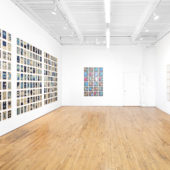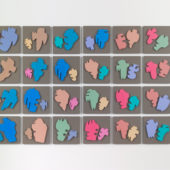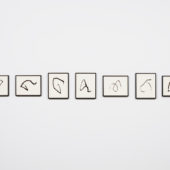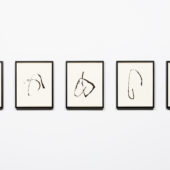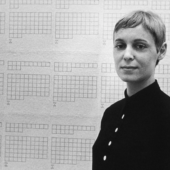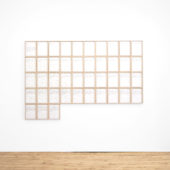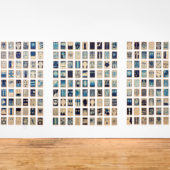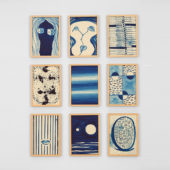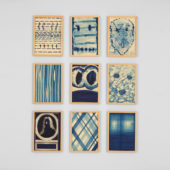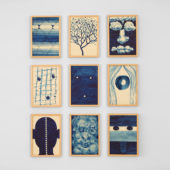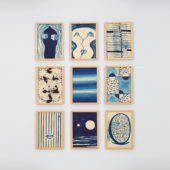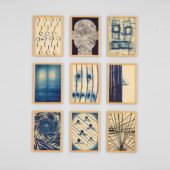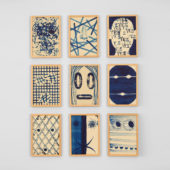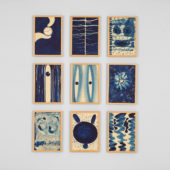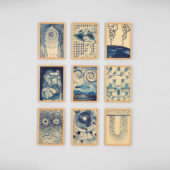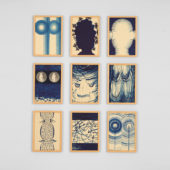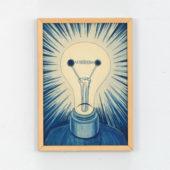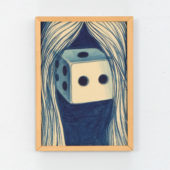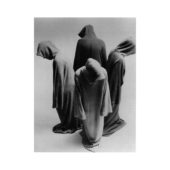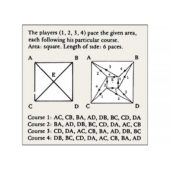“YOU MUST GO ON. I CAN’T GO ON. I’LL GO ON.” | Samuel Beckett, Hanne Darboven, Allan McCollum, David Moreno | March 13 – April 23, 2022 | Organized by Clayton Press and Gregory Linn
Two works by Samuel Beckett — his 1953 novel The Unnamable (L’Innommable) and his 1981 teleplay Quadrat I + II — are the heart of this exhibition.The exhibition’s title is a direct appropriation of the concluding words in Beckett’s book. The novel is a search by an unnamable narrator to define and name oneself. Based on the undecidability and indecipherability of meanings and intentions, the book is a constant oscillation — a push pull—between the positive and negative: “You must go on. I can’t go on. I’ll go on.” — Clayton Press and Gregory Linn


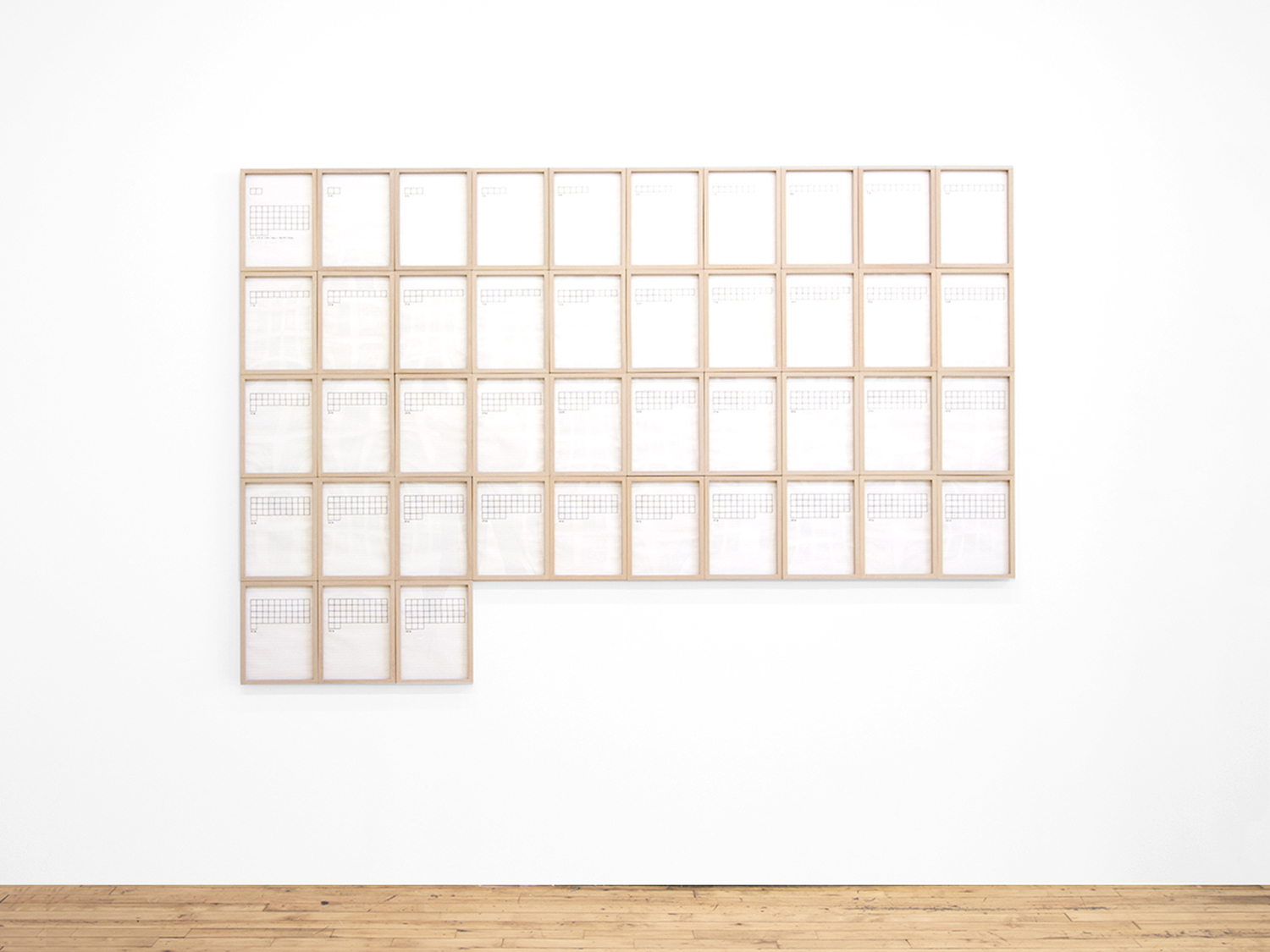
Quad (Quad I + II) is Beckett’s abstract play for four dancers and instrumentalists. First performed live in 1981 on German television, the performers ritualistically trace the outlines of two squares. Quad is repetitive, ambiguous, and pointedly “pointless.” Following a pre-determined, coded process of repetitive patterns, the dancers move to metronome-like drumming. Beckett’s choreography is fixed, yet each dancer’s movements are transient, imperfect. Each circumambulation of the stage, as well as each diagonal crossing, tempts chance missteps, defying Beckett’s patterns. Both of Samuel Beckett’s works are points of comparison for the other three artists’ use of patterns, seriality, repetition, endlessness, systems, and change, reflecting not only artistic interests, but also obsessions that are personal and revealing.
— Clayton Press and Gregory Linn
— Clayton Press and Gregory Linn
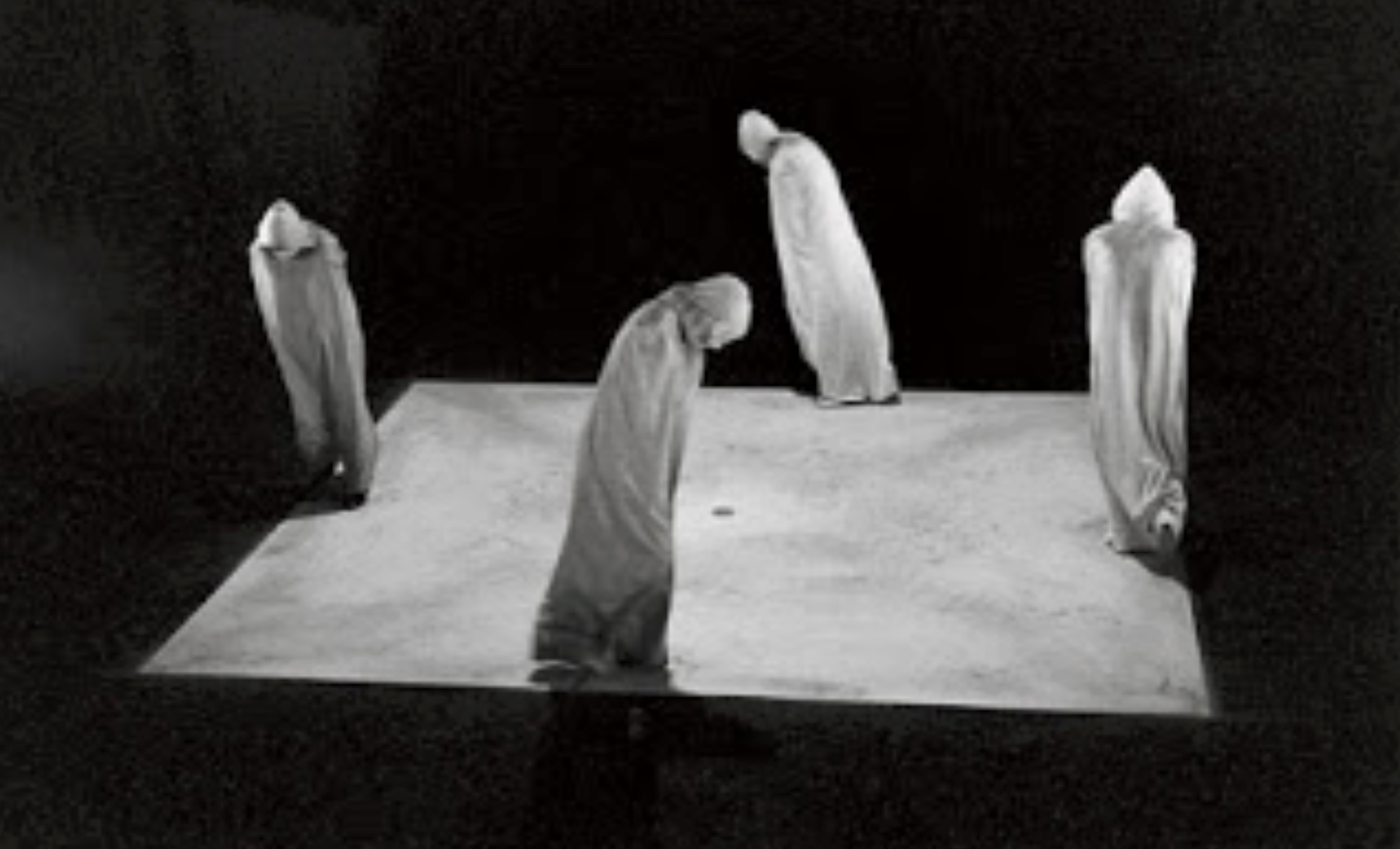
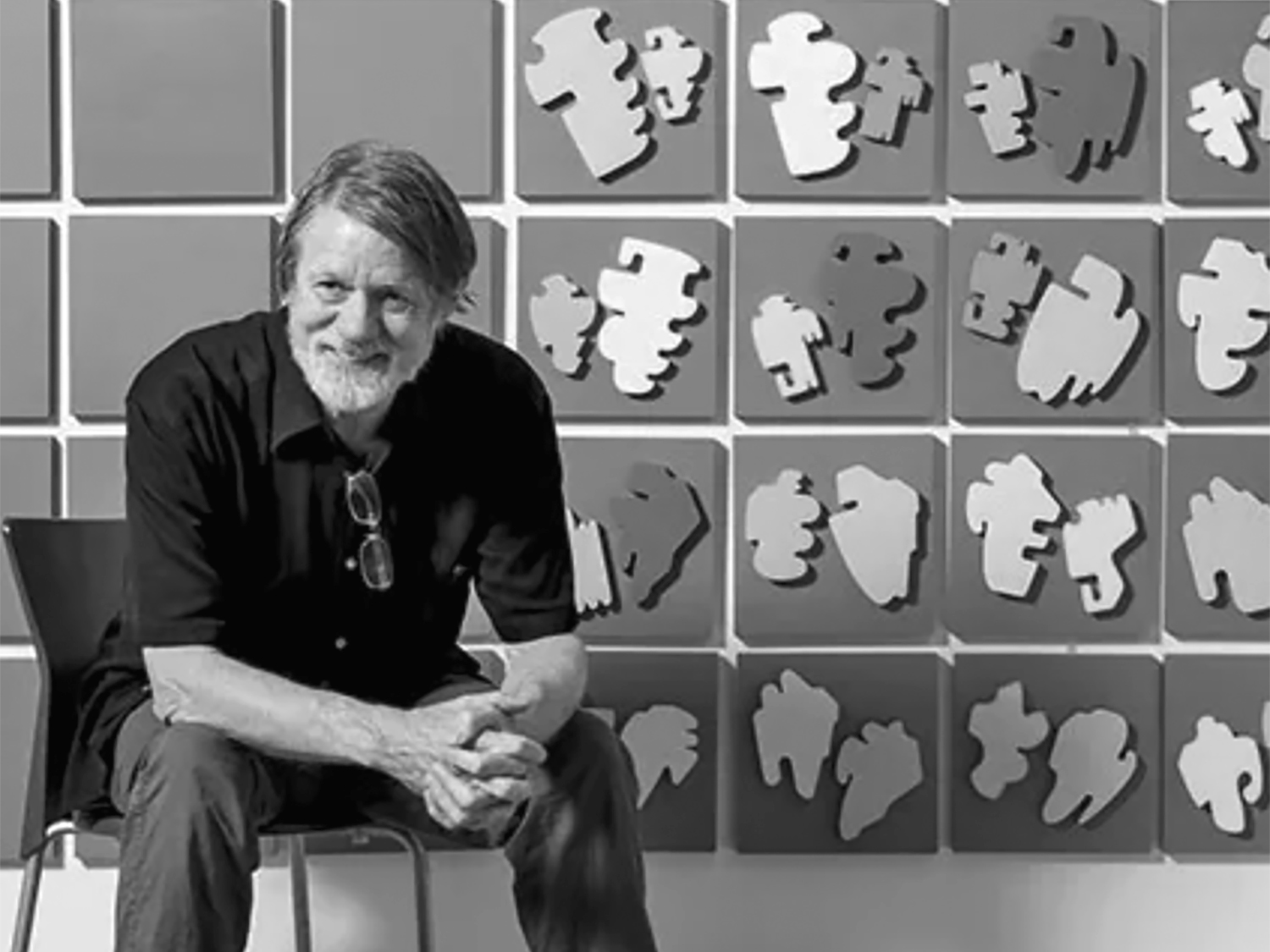
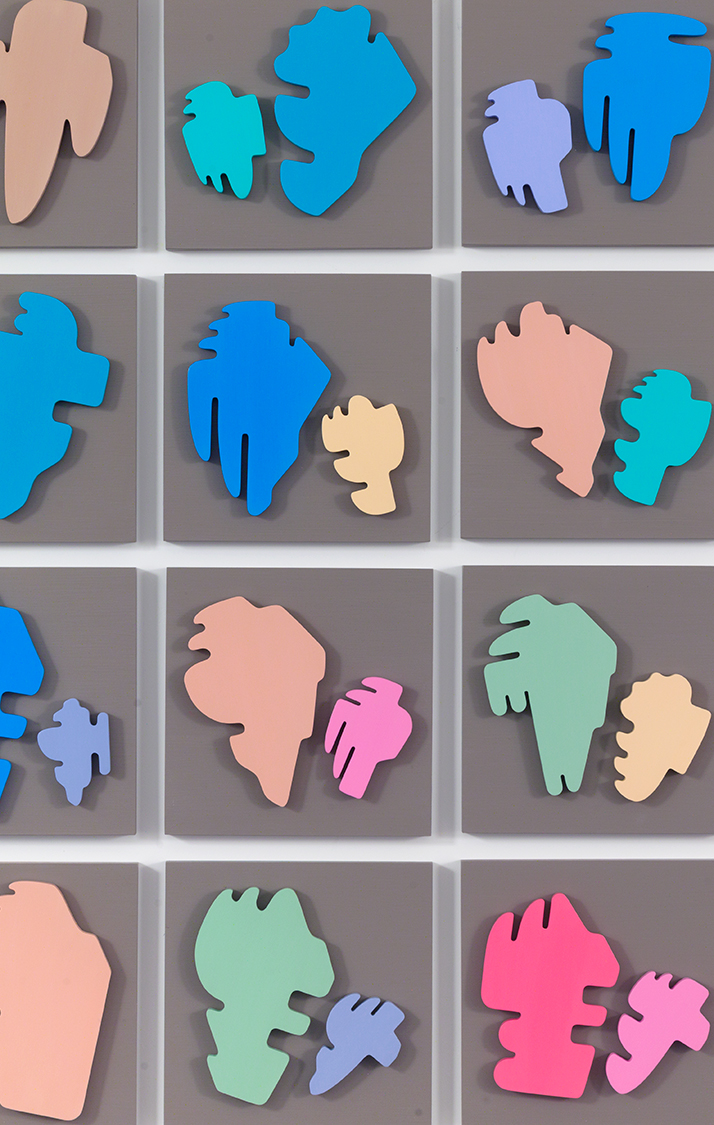
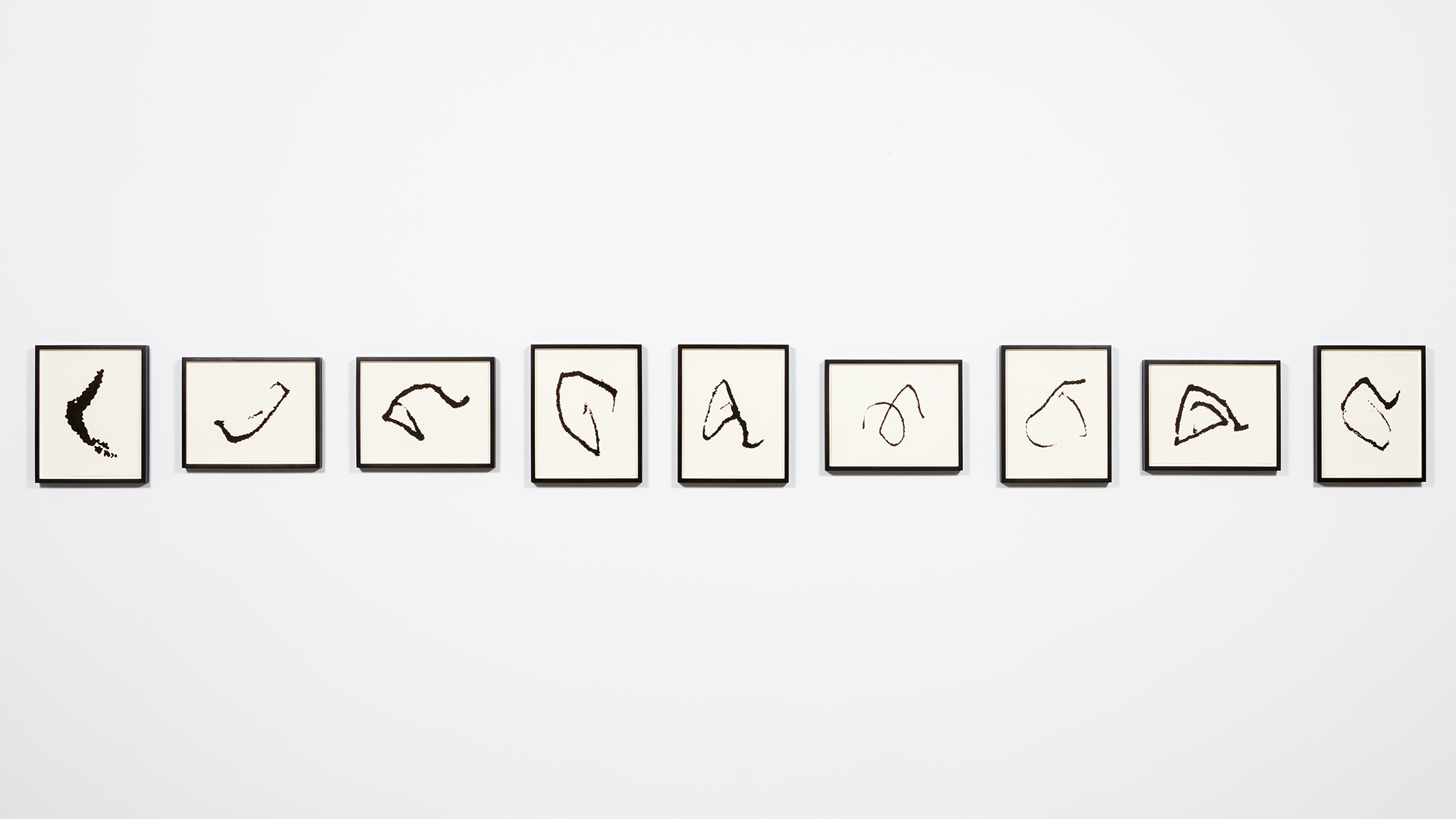
Allan McCollum’s two installations are conceptualizations that use reproduction and seriality. The Shapes Project, which he began in 2005, uses a basic computer graphic program that results in 31 billion unique, albeit highly nuanced, shapes. The second work, The Writer’s Daughter, emerged from a two-year-old child’s attempts to imitate her parent’s handwriting, which led to the artist’s contemplation of written language and its meanings. — Clayton Press and Gregory Linn
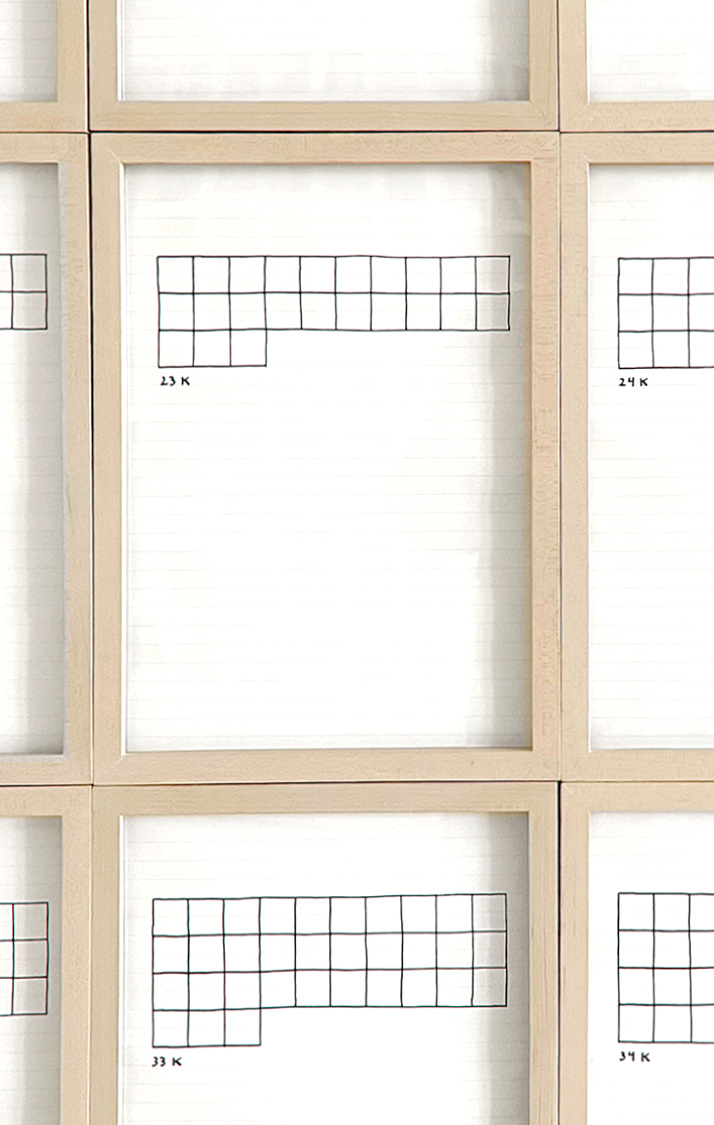

Hanne Darboven. Ein Jahr (1970, 2007), a silkscreen print, is an iconic number construction that marks “a process of continuation—a process which takes time to do, which takes time as one of its subjects, and which takes from time (the calendar) its numerical foundations.” Her work is multi-directional—expanding and contracting, circular and changeable.
— Clayton Press and Gregory Linn
— Clayton Press and Gregory Linn
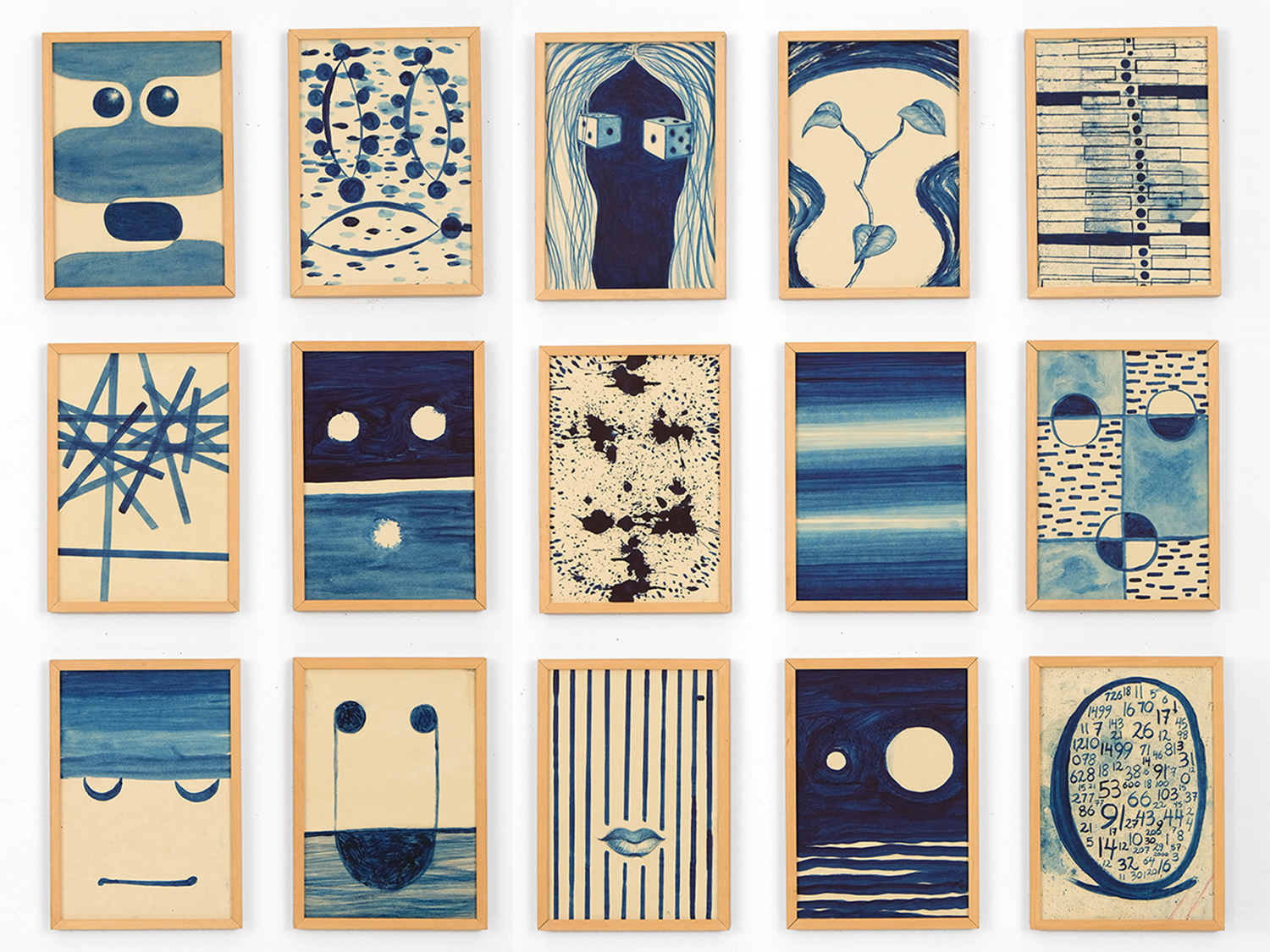
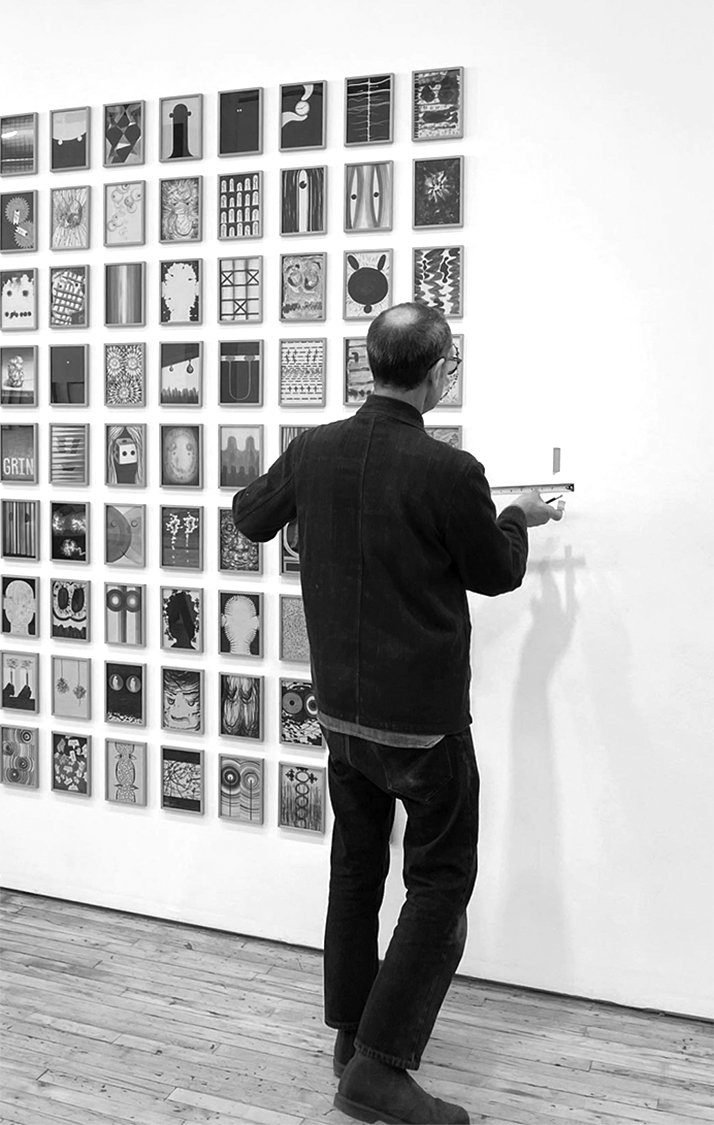
David Moreno’s project, You Can Always Choose Your Own Face, consists of 243 unique hand-painted, framed images which follow a near-musical formula of theme and variation. The commonality in this potentially endless series are two eyes and a mouth, resulting in works that do not and should not look alike. — Clayton Press and Gregory Linn

